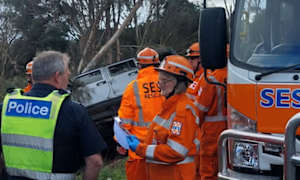Special report by Bruce Wardley
EXPRESSIONS of Interest have been called for jobseekers wanting work with the Marinus Link undersea electricity interconnector from Tasmania to Waratah Bay.
Hundreds of workers are expected to be recruited for the project which is expected to provide an employment boost for South Gippsland but also push up rental costs.
Marinus Link is currently preparing a workforce development plan which will outline the expected roles and workforce numbers required to deliver this major contract including converter station supply and cable installation.
Marinus Link is looking for electrical, mechanical, civil and environmental engineers, project managers, and people with experience in construction, environment and sustainability, people and culture (HR), safety and wellbeing, governance, legal and compliance, finance and commercial, communications, stakeholder engagement and digital and I.T. personnel.
The project workforce is anticipated to swell to 350 during the construction period with half the workers expected to be sourced locally but the remainder coming from other areas of Victoria or further afield if necessary.
Significant opportunities are expected for local businesses according to Marinus Link who anticipate signing-on their final major contractor in the coming months to lead the project’s civil and construction works.
An Environment Effects Statement (EES) for the project concluded Marinus Link would benefit local communities by creating short-term employment, local business opportunities to supply good and services, local and regional training and development, demand for short-term accommodation by construction workers, and employment opportunities for First Peoples, women, youth and socially vulnerable groups.
Increased demand for skilled labour in the region could however impact on the agricultural, forestry and fisheries sectors, and local health and emergency services.
To minimise the impact on health services Marinus Link was asked to provide a first response medical capability for potential workplace incidents during construction
The need for short-term accommodation for the construction workforce was forecast to impact seriously on the availability and affordability of local housing depending on potential overlap with other projects such as the Delburn and Star of the South offshore wind farms.
Rental vacancy rates in Fish Creek, Sandy Point and Mirboo North were found to be currently below 1% indicating a shortage of rental properties which could force up rents and price low-income households out of the market, according to the EES.
The average income in South Gippsland was 28% lower than the state average reinforcing concern about rental supply particularly for households sensitive to rental price increases.
A joint Inquiry and Advisory Committee (IAC) into Marinus Link noted the likely adverse impact on housing availability and affordability was difficult to avoid.
“There is little that any individual project can be expected to do other than develop a worker and accommodation strategy,” IAC concluded.
Short-term effects which may occur during construction of Marinus Link included traffic disruptions and reduced access to recreational areas, but IAC considered these could be minimised or avoided through ongoing community consultation.
Employment opportunities were predicted to become more subdued once the link was fully operational with the ongoing benefit to local communities likely to be limited to broader economic activity and investment in community infrastructure.
A complaint handling system was suggested to provide ongoing communication with stakeholders to avoid potential adverse effects regarding the timing and duration of the Marinus Link project, and a community benefit sharing scheme possibly offering sponsorship, investment and training opportunities.
Positive assessment of the project by the Victorian Planning Minister was welcomed by Marinus Link as a significant milestone in the project’s approvals pathway.
Project Director Mike Carter said the outcome reflected a rigorous and transparent regulatory process and a dedicated team committed to respecting the environment.
“This is a major step forward for the project and a testament to the dedication of our Environment and Sustainability team and expert advisors.
“We want to thank the Minister for acknowledging the years of planning and design refinement that have gone into the proposed route, which largely avoids native vegetation on land, and rocky outcrops and reefs in the marine environment.”
When complete Marinus Link will provide a two-way 1500MW capacity dual underground cable and subsea electricity connection between Tasmania and Victoria.
The project includes 255km of undersea cables across Bass Strait and 90km of underground cables in Gippsland coming onshore at Waratah Bay about 3km west of Sandy Point.
A coastal transition station and communications building is planned for Waratah Bay with underground cables running approximately 90km northwards towards the Valley.
The land-based cable components are also predicted to result in the removal of 6.75 hectares of remnant native vegetation along roadsides, waterways and in paddocks.
The offshore marine cable has been designed to avoid rocky outcrops and reefs however the subsea cable alignment was likely to see the removal of approximately 0.3 hectares of endangered Tasman grass-wrath sea grass.
The loss of the sea grass was considered to be unavoidable but not likely to significantly affect regeneration of the species once construction was complete.
The Victorian Planning Minister was satisfied any adverse social impact from the project apart from housing affordability and availability could be managed satisfactorily.
Employment and contracting opportunities will be the responsibility of Marinus Link’s major contractors with current vacancies available at marinuslink.com.au/careers/
For more information on the Marinus Link environmental approval process go to planning.vic.gov.au/environmental-assessments/browse-projects/marinus-link













